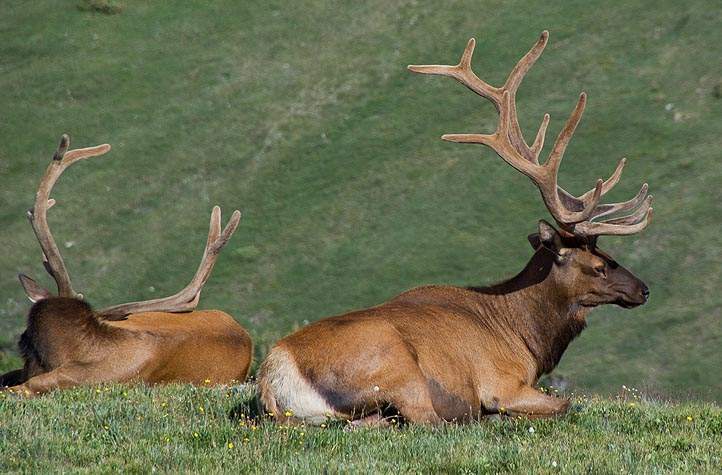
As the mining industry becomes more aware of the environmental damage large-scale extractive operations can cause, many are taking steps to reduce the harmfulness of their operations.
Often, this takes the form of extensive land rehabilitation projects, where companies set out long-term plans to redevelop land after a mine has been exhausted; however, many companies have adopted a more specific approach, engaging in operations to protect individual species of wildlife native to the lands where they mine. Here are five of the biggest conservation projects in mining.
Appalachian Wildlife Center, Kentucky, US
In July this year, biologist David Ledford announced the formation of the Appalachian Wildlife Center, a non-profit organisation that aims to construct a conservation area on former mining land in the US state of Kentucky. The area will cover 12,500 acres, a third of which will consist of plains and grassland built on former mine sites.
The reclaimed lands will be home to species such as the Rocky Mountain elk, which number 11,000 in Kentucky, but which have lost habitats to mining operations and are a frequent target for hunters. In 2016, close to 600 elk were hunted in the state, an increase of almost 400 over the last decade.
The region will also host over 240 species of birds year-round, and Ledford plans to open up parts of the reserve to university researchers to test other rehabilitation options, such as the construction of orchards.
The project has already received $35m in funding from donors and the US Office of Surface Mining and Reclamation Enforcement, as the national government aims to improve on its historically poor performance of mine rehabilitation in the region; according to the Natural Resources Defense Council, by 2010, just 6%-11% of Appalachia’s former mines had been converted into profitable projects.
How well do you really know your competitors?
Access the most comprehensive Company Profiles on the market, powered by GlobalData. Save hours of research. Gain competitive edge.

Thank you!
Your download email will arrive shortly
Not ready to buy yet? Download a free sample
We are confident about the unique quality of our Company Profiles. However, we want you to make the most beneficial decision for your business, so we offer a free sample that you can download by submitting the below form
By GlobalDataConstruction on the project began in June and Ledford hopes to open the reserve to the public in summer 2020.
Newmont’s Conservation Framework Agreement, Nevada, US
In September 2017, the Nevada Mining Association gave US mining giant Newmont the Leadership in Conservation Planning award for the company’s commitment to protecting wildlife in the state through its Conservation Framework Agreement (CFA).
The agreement was signed in August 2016, and commits Newmont, and both the state and national government, to conduct land exchanges to offset the environmental damage of mining operations, with a view to protecting sage-grouse habitats in the state.
The CFA covers an area of 1.5 million acres, much of which is home to the birds, which are reported to number fewer than 400,000 in the wild by Defenders of Wildlife. The sage-grouse is also considered near-threatened by the International Union for Conservation of Nature.
The CFA was updated in July 2018 to include a conservation credit system to further protect the sage-grouse at Newmont’s West IL Ranch project. The state’s Department of Conservation and Natural Resources describes the system as one “designed as a debit and credit system to mitigate disturbances to the sagebrush ecosystem,” and has resulted in Newmont committing to a new irrigation project at the operation to detoxify meadows that form the sage-grouse’s habitat.
BHP’s Chasing Ghosts programme, Pilbara region, Australia
In August last year, BHP announced its ‘Chasing Ghosts’ initiative to provide artificial habitats to ghost bats, Australia’s largest carnivorous bat, whose habitats had been damaged by the company’s mining operations in the country’s Pilbara region.
The Australian Wildlife Conservancy estimates that there are fewer than 10,000 ghost bats left in the wild, following a “dramatic” decline in population over the last century, but the lack of data on the bats’ population and distribution has impeded previous conservation efforts. Western Australia’s Department of Parks and Wildlife considers the ghost bat a Priority Four species, one that is near-threatened, but “in need of monitoring”.
BHP’s programme used techniques such as faecal analysis to collect more precise data on the bats’ population figures, and technology such as laser mapping to analyse existing ghost bat habitats and inform the construction of artificial roosts.
The project was awarded the state’s Golden Gecko award for Environmental Excellence earlier this month, as the population data collected confirmed the presence of ghost bats in lands mined by BHP, and was the starting point for a collaborative project to manage the bats’ population.
De Beers’ nature reserves, South Africa
De Beers received Wildlife Ranching South Africa’s Biodiversity and Social Responsibility award in June 2016 for the management of four game reserves alongside its mining operations. The company has committed to constructing 45 hectares of conservation land in South Africa for every one hectare used for mine land, an approach that has led to a string of accolades for the company. Ranching South Africa’s award was the fifth given to the company between 2010 and 2016.
The company manages close to 150,000 hectares of conservation land in South Africa, and has backed a number of initiatives to protect local wildlife, including a buffalo breeding project; the establishment of free ranging herds; and the protection of species such as rhinos.
De Beers’ operations are home to over 400 species of mammals and birds, 11 of which are classified as vulnerable, and nine of which are considered endangered. The company has continued to provide conservation services following the 2016 award.
In April, De Beers opened its Rooipoort Nature Reserve in South Africa’s Cape Province to researchers from the University of the Free State, who began work on a giraffe conservation project in the region.
Africa’s wild giraffe population has fallen by around 40% over the last 30 years, and the researchers collected a range of samples from giraffes, including blood, hair and semen, and fitted many with GPS trackers to provide data on the animals’ health and distribution.
Westmoreland Coal and bird populations, Texas, US
North American miner Westmoreland Coal has received a number of awards for its conservation projects in Texas, most recently in May 2013 with the Lone Star Land Steward award from the state’s Parks and Wildlife Department.
The company worked with the state government to develop revisions to Westmoreland’s reclamation guidelines for projects affecting quails and grassland birds, which led to clear increases in Texas’ quail populations.
From 2013-16, the Rolling Plains region saw the mean number of birds identified per route increase from six to 54, according to the Parks and Wildlife Department, and the High Plains reported an increase from three to 35 over the same period.
The state’s Railroad Commission also awarded Westmoreland with its 2013 Reclamation Award for its work on constructing artificial habitats to replace those lost to mining operations. The company claims that the appearance of its “more natural-looking woody species habitats” was a significant contributor to the integration of birds to its artificial habitats.
However, the company’s projects have not been as effective in the long term, and quail populations have declined over recent years. In the High Plains, the population fell from the peak of 35 to 16 in 2018, while in the Rolling Plains the number of quails plummeted to just five in 2018, significantly lower than the 15-year mean of 20.







